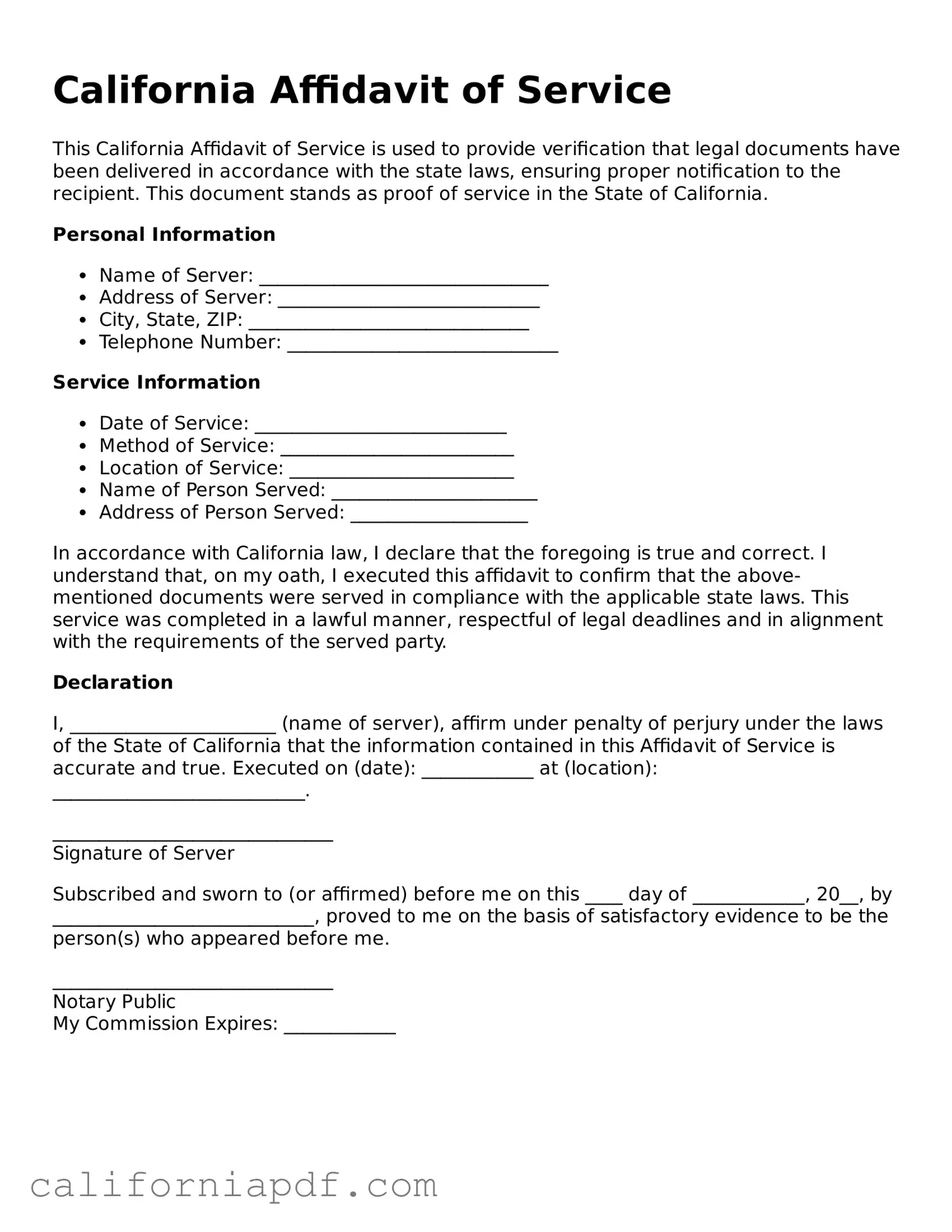The California Affidavit of Service form shares similarities with the Proof of Service form, commonly used in many legal jurisdictions. Both documents serve to officially confirm that legal documents have been properly delivered to the relevant parties involved in a court case. They must detail who was served, the method of service, the location of service, the date and time of delivery, and the person who made the delivery. This confirmation is crucial for ensuring that the legal process operates fairly and transparent people receive timely notice of actions affecting their rights.
Comparable to the Summons Response Form, the affidavit of service provides critical documentary evidence within the legal system. While the Summons Response Form is used by a defendant to formally answer charges or claims brought against them, the affidavit of service verifies that the summons, along with any accompanying documents, was delivered in accordance with legal standards. This serves as an assurance that the defendant has been given the opportunity to respond.
Another similar document is the Notice of Entry of Judgment, which is filed with the court to notify all parties officially about a judgment's entry. Like the affidavit of service, it plays a pivotal role in ensuring all parties are fully informed about important developments in their case. The affidavit of service ensures the delivery of documents, while the Notice of Entry of Judgment communicates the outcome of these documents once processed by the court.
The Motion to Vacate Judgment form, which requests the court to dismiss a previous judgment, is also related in its connection to the legal documentation process. The affidavit of service for this form would verify that all parties have been notified of the motion, emphasizing the importance of proper service in allowing all parties to contest or argue the motion.
Similar to the Civil Complaint Form, where a plaintiff outlines their case against a defendant, the affidavit of service assures that this critical initial document reaches the defendant or their representative. It is the documentary proof required to move forward with the legal proceedings, grounding the complaint in the due process.
The Case Management Statement, used to outline the preparedness of a case for trial, shares its evidentiary purpose with the affidavit of service. Both are procedural documents that keep the court informed of the case's progress and ensure transparency and fairness in legal proceedings by verifying that all necessary parties have received pertinent case documents.
Interrogatories, or sets of written questions directed to a party in a lawsuit as part of the discovery process, necessitate an accompanying affidavit of service. This affidavit certifies that the questions have been formally delivered, underlining the role of proper service in facilitating the exchange of information critical to the legal process.
The Request for Admission form, which asks a party to admit or deny specific statements, operates in tandem with an affidavit of service to confirm its delivery. This ensures that the request reaches the intended party, allowing them to respond or object within a stipulated time frame, and highlights the affidavit's role in maintaining procedural integrity.
Similarly, the Deposition Notice, which informs a party or witness of their need to give testimony under oath before a court date, requires an affidavit of service. This document confirms the notice has been appropriately delivered, ensuring that all involved parties are prepared and aware of their obligations, further underscoring the affidavit's fundamental role in the legal process.
Lastly, the Settlement Agreement, documenting the resolution of a dispute between parties without a trial, parallels the affidavit of service in its finality and formality. The affidavit of service for a Settlement Agreement ensures that the agreement has been communicated to all parties involved, marking a critical step towards the resolution of disputes and the closure of legal proceedings.
